As AI tools become more common, they’re changing how people search, delivering direct, personalized answers, often without sending users to other websites.
That means digital marketing is shifting—from chasing clicks to building brand visibility and trust right inside the AI’s answer.
Think of it this way: traditional SEO was like competing to have the best storefront on a busy street. GEO is like making sure the local tour guide knows about your business and recommends it to visitors.
In this guide, you’ll learn how to get your brand noticed in the era of AI-powered search and how to track your AI visibility.
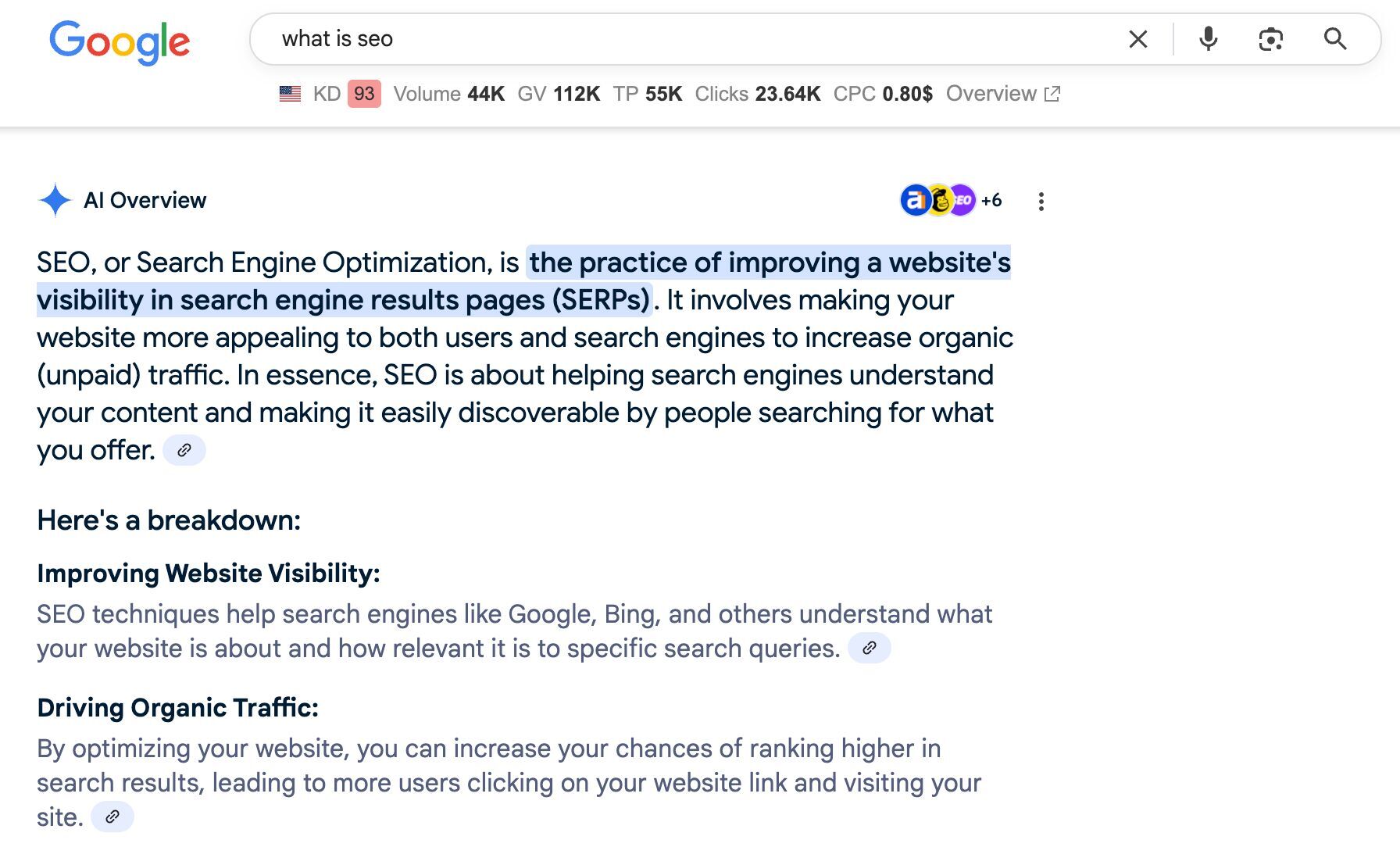
Two: when an AI Overview appears, the top search result sees a 34.5% drop in clicks—a built-in change that can cause a big traffic hit for any site on the web.
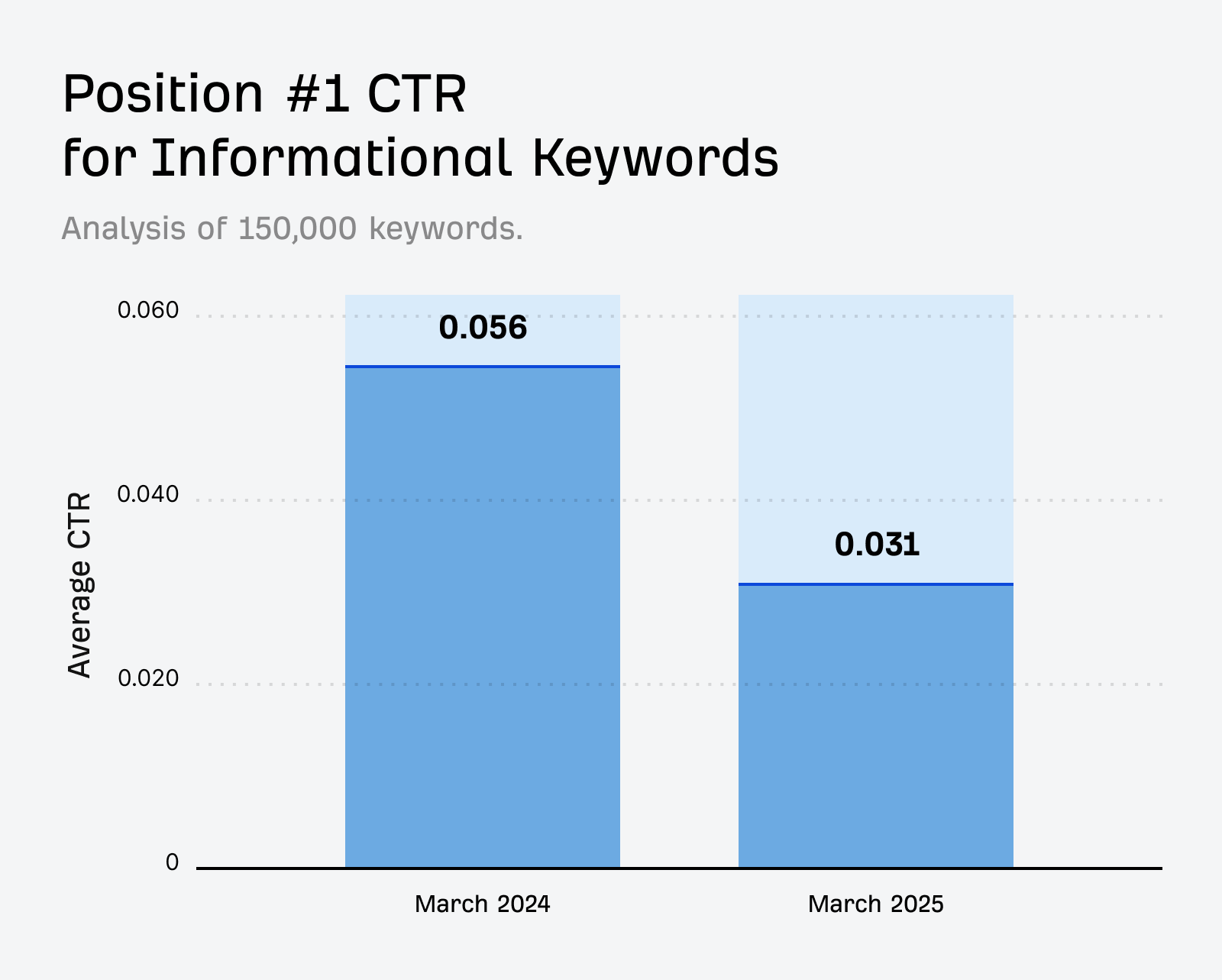
Three: all major AI assistants can search the web, making them a new alternative to Google. The problem is, like AI Overviews, they answer the question instantly and don’t always link to the products or services they mention (and people don’t always click).
But before you panic about completely overhauling your marketing strategy, here’s the good news:
AI still relies on traditional search. AI assistants use something called RAG (Retrieval-Augmented Generation), which means they actively search Google, Bing, and other search engines to find current information. So if you’re already ranking well in traditional search, you’re already in the running for AI citations and mentions.
Higher conversion rates may be the silver lining. I’ve seen numerous reports on LinkedIn and experienced this ourselves at Ahrefs—AI-driven traffic converts better (23 times in our case) than traditional search traffic. While the volume is smaller, the quality appears to be higher.
Google says don’t panic. Gary Illyes stated that specialized “AI SEO” isn’t necessary to rank in AI Overviews or the new AI Mode. Good content and solid SEO fundamentals still matter most. You don’t need to throw out everything you know about search marketing.
AI search is changing the game, but it’s building on the same foundation you’re already working with.
In fact, you can gain AI visibility through “traditional” SEO, and vice versa. Ahrefs’ content and product pages have been mentioned 7,470 times across 2,309 pages, without any effort to optimize them for AI visibility. It makes sense when you think about it: every new type of search is built on existing forms of content.
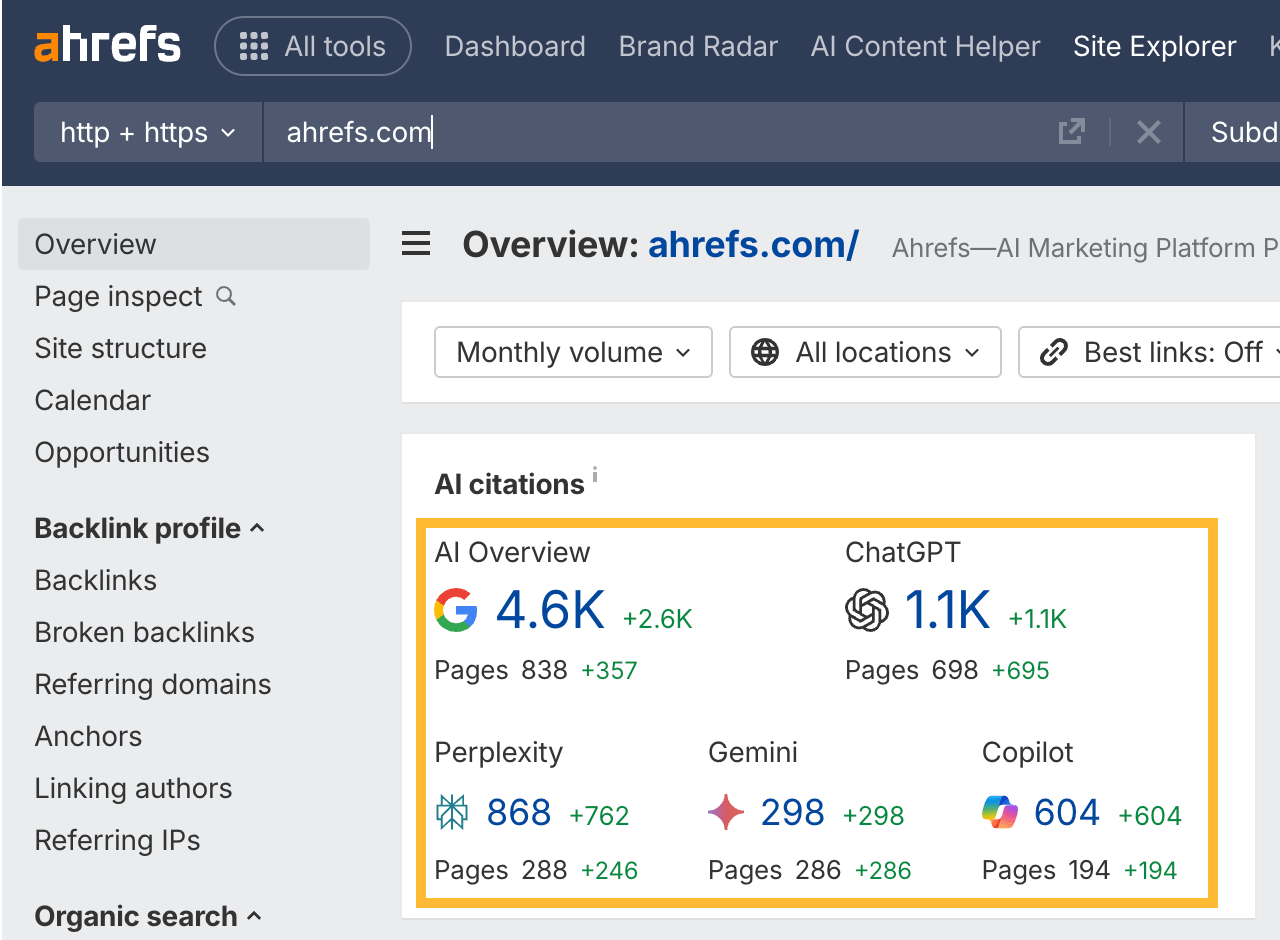
There are some differences, though.
1. Get mentioned across the web
This may surprise you: most mentions of your brand will likely come from other websites, not your own.
When I looked at the top sources for Ahrefs’ brand mentions in AI responses, third-party sites dominated. For example, in Google’s AI Overviews, the top pages mentioning Ahrefs didn’t include ahrefs.com at all.

Perplexity was the only assistant that listed our page as one of the top sources mentioning our brand, but not as the main source.
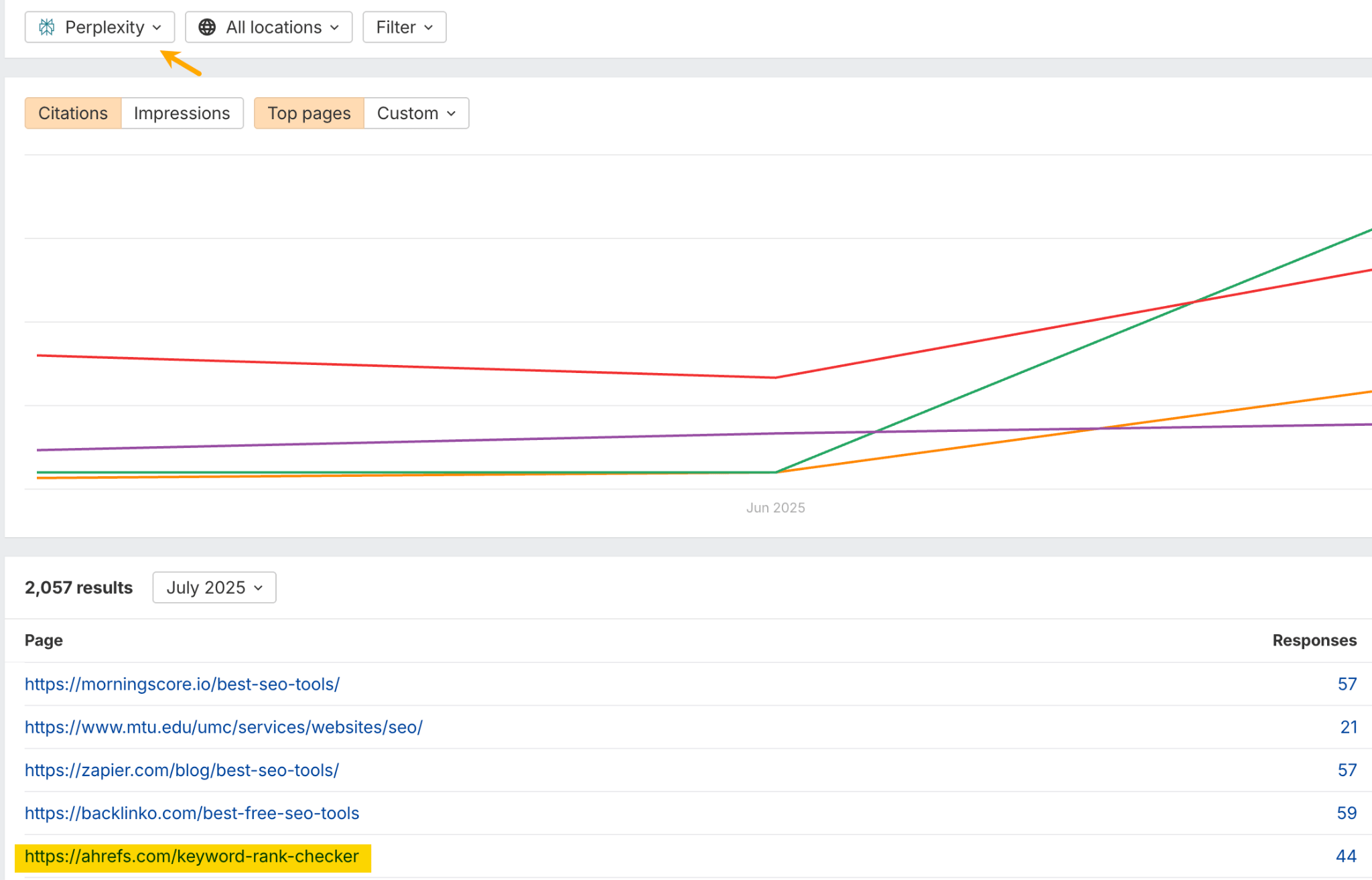
This means you need to focus on getting mentioned across the web through:
- Industry rankings and lists: get included in “best of” lists and industry roundups.
- PR and media coverage: traditional PR becomes even more valuable in the AI era.
- Reviews and case studies: encourage customers to mention your brand in reviews.
The big difference from traditional link building is that these mentions don’t need to be linked. AI can pick up unlinked brand references just as easily, as our research on Google AI Overviews shows.

To find sites that often appear in AI answers, just plug their domain in Ahrefs’ Site Explorer and look at the AI citation count in the Overview report:
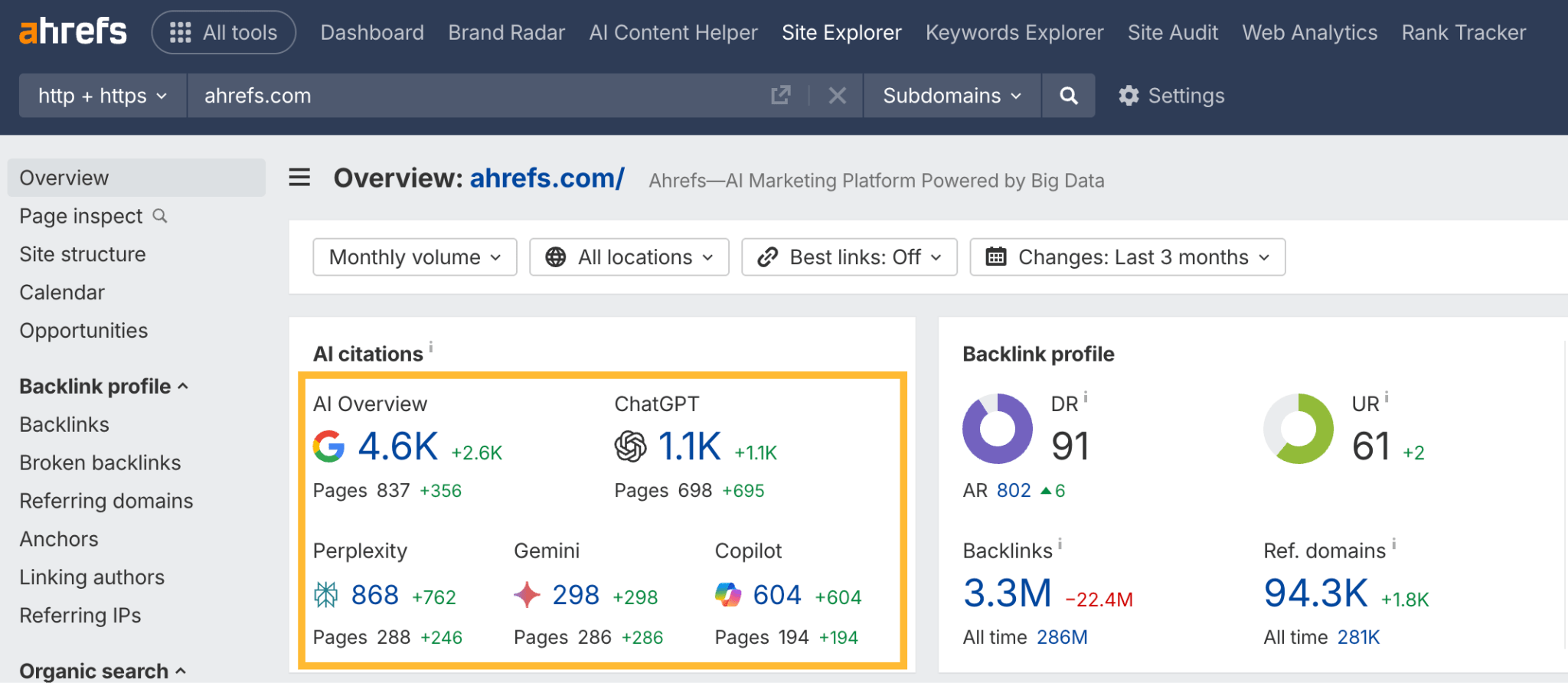
If you’re choosing between two sites with similar AI citations, consider:
- Domain Rating (DR): Still a solid measure of trustworthiness and popularity. It’s the number right next to AI Citations in Site Explorer.
- Branded search volume: Sites people actively search for often have more influence in AI citations. In Site Explorer, open the Overview report, scroll down a bit to the Entities graph, and select only the site’s brand name.
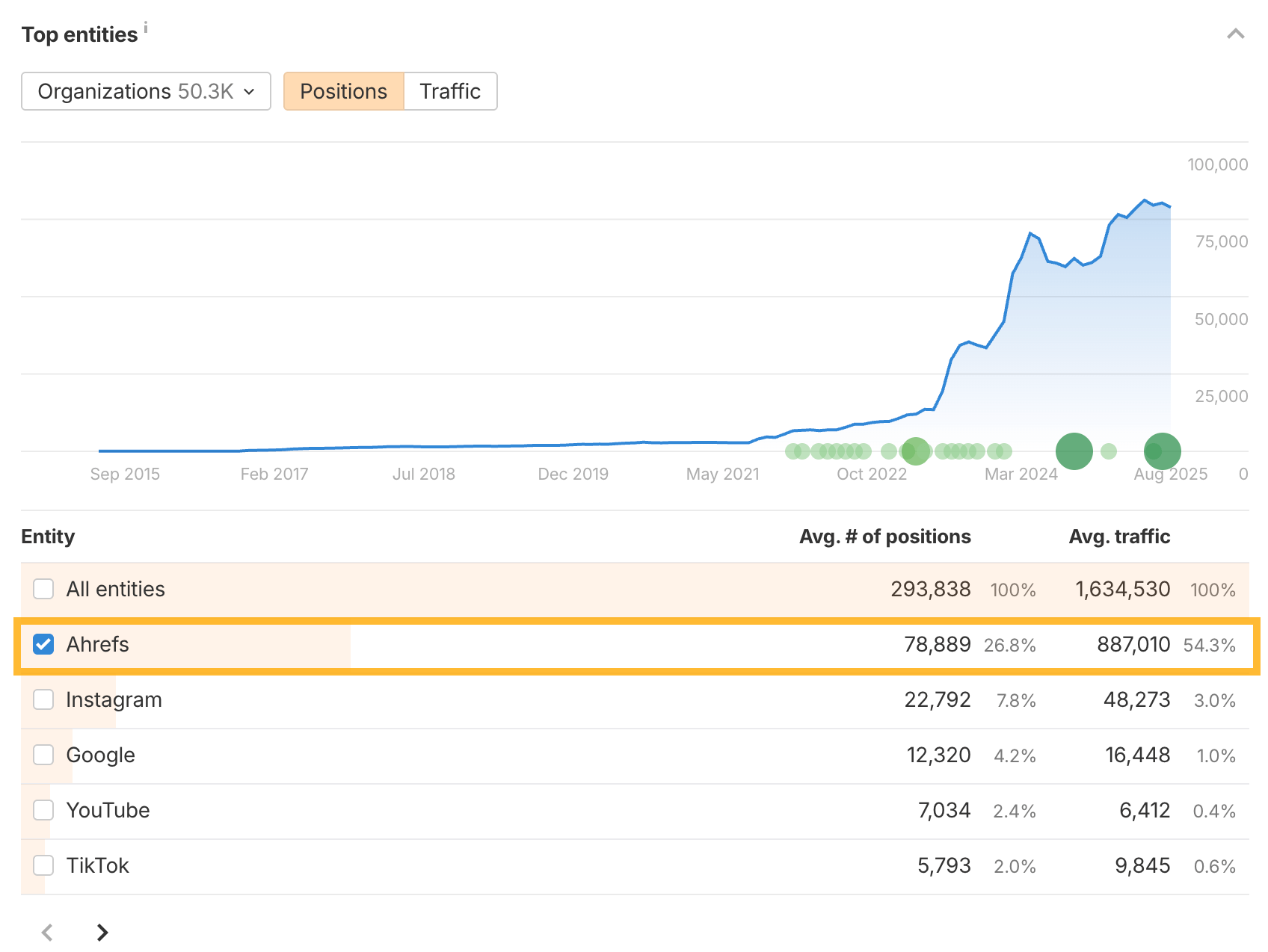
In a bit, I’ll explain how to find and close your AI visibility gap.
Further reading
2. Create the type of content that does well in AI search
Not all content performs equally well in AI search. Our analysis of pages receiving AI traffic reveals clear patterns about what content types AI assistants prefer to cite.
The general trends across all sites:
Based on broad analysis, certain content types consistently earn the greatest proportion of AI traffic:
- “Best” content: 7.06% of AI traffic goes to pages with “best” in the title.
- “Top” lists: 5.5% of AI traffic.
- “Vs” comparisons: 4.88% of AI traffic.
- How-to guides: 6.35% of AI traffic.
- Product-focused pages: “Contact” (6.8%), “products” (6.43%), “product” (4.71%), and “services” (4.53%) pages.
But here’s the thing: every brand and industry is different. So I dug deeper into the last 3 months of our own data to see what type of content generates the most traffic for Ahrefs. I’d strongly recommend doing the same for your site.
| Content category | Total views | Engagement | Strategic insight |
|---|---|---|---|
| How-to guides | 7315 | 184 sec time on page | Bread-and-butter traffic drivers; AI assistants favor clear, actionable guides. |
| Data studies | 6134 | 207 sec time on page | High engagement; authoritative research performs well in AI results and invites further clicks. |
| Homepage | 2875 | 0.53 bounce rate (low) | Captures navigational queries; AI assistants surface brand entry points. |
| Listicles (tools) | 976 | 0.84 bounce rate (high) | Strong time on page; useful for tool discovery via AI assistants, but high bounce suggests single-visit utility. |
| Definition | 747 | 173 sec time on page | Fulfills direct informational queries; AI assistants use these for concise answers. |
| Listicles | 585 | 0.79 bounce rate (high) | Good at attracting curiosity clicks from AI summaries. |
| Product | 530 | 0.24 bounce rate (low) | Low bounce rate; AI assistants can drive qualified visitors directly to product-related pages. |
| Opinion / thought leadership | 282 | 214 sec time on page | Engaging for deeper reads; niche but valuable for brand authority in AI contexts. |
I think the sweet spot is creating a content mix that covers different user intentions. Some people want quick updates on trends, others want comprehensive tutorials they can bookmark, and some are looking for hard data to back up their decisions. If you only create one type of content, you’re probably missing out on citations from the other user groups.
So, start by auditing your existing content to see which of these categories you already have, then take a look at your own analytics to spot patterns. What content gets the most engagement from your audience? That’s probably where you should double down, but don’t ignore the other categories entirely.
You can find this data in Ahrefs’ Web Analytics (free in AWT). Just click on AI Search to see how visitors from this channel interact with your site.

And here’s an extra tip: keep your core content fresh and up-to-date. We found that compared to traditional search results, AI assistants prefer citing fresher content.
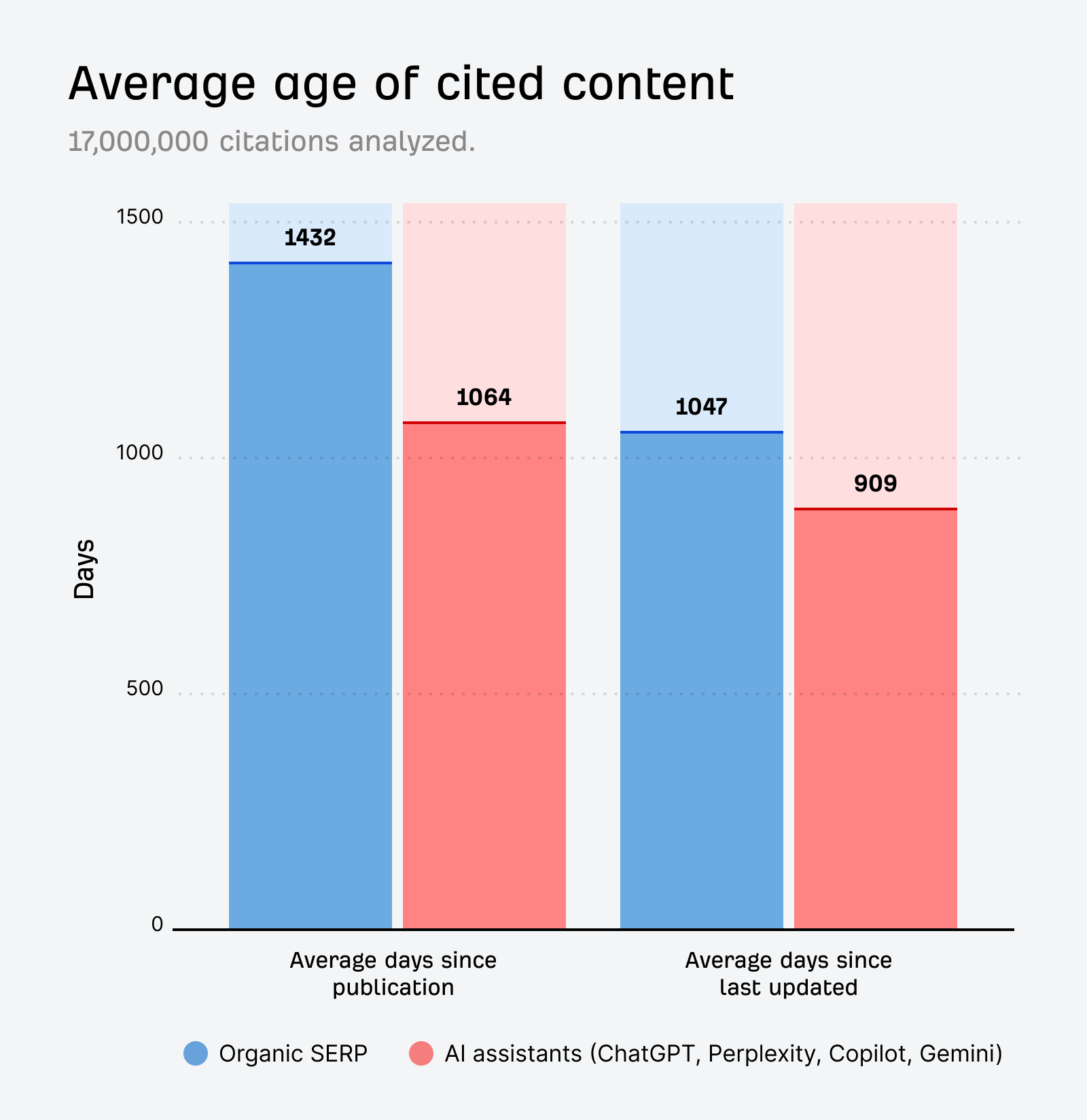
Further reading
3. Create a great experience on your homepage and product landing pages
Did you know that over 80% of ahrefs.com referral traffic from AI search goes to just three content types? Those are free tools (mentioned before), product pages, and our homepage.
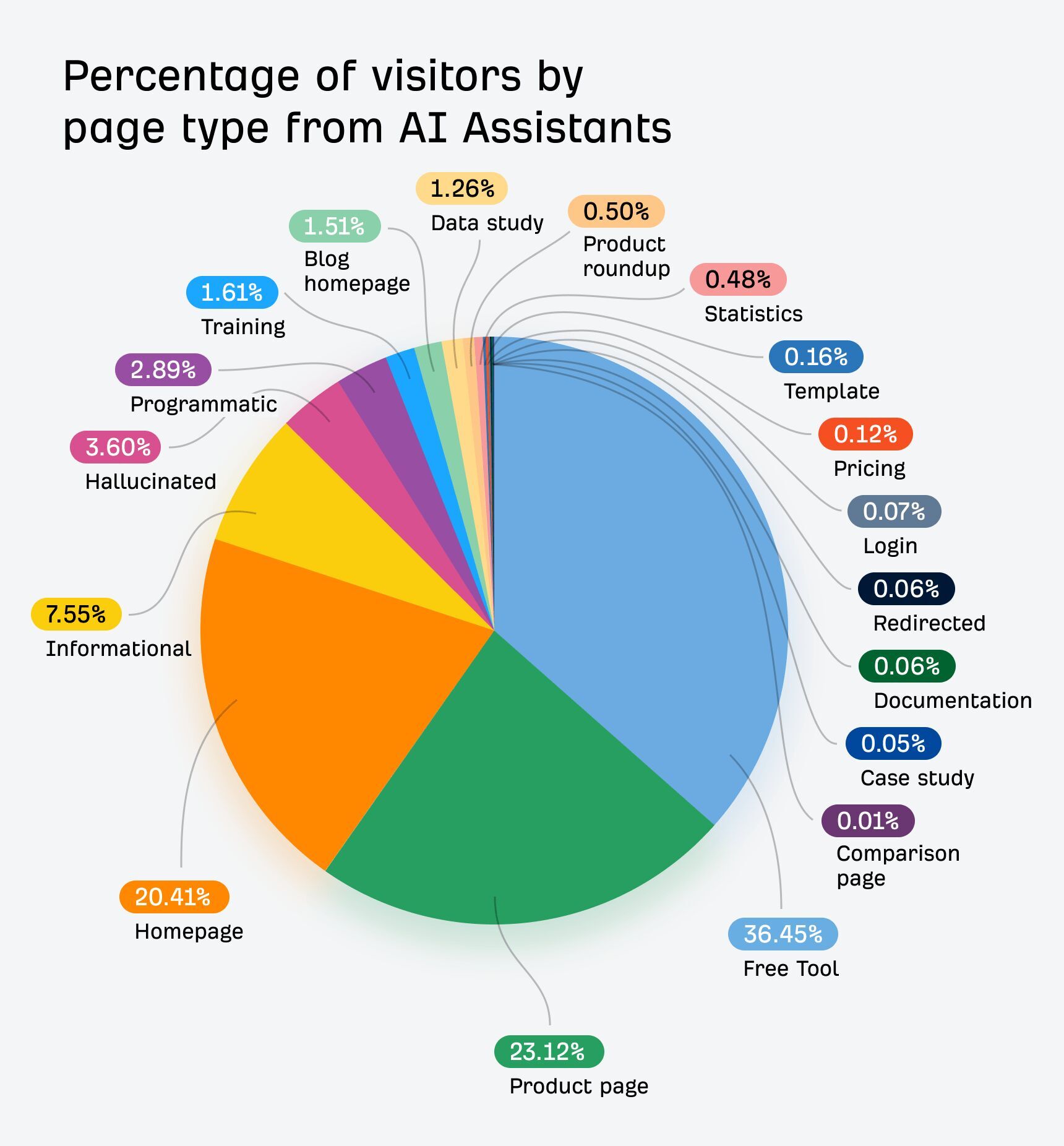
AI-generated traffic to your site will likely follow similar patterns. Since AI tools tend to guide users to a few key pages, it’s important to make sure those pages offer a great experience.
- Make what you do and why you’re valuable immediately obvious.
- Use headers, bullet points, and clear sections.
- Make it easy for both humans and AI to find your contact details.
- Create clear, factual product/service descriptions that AI can easily parse and cite.
4. Structure content for AI comprehension
AI models love structure and clarity. Here are a few simple rules for making your content AI-friendly.
Use clear formatting:
- Hierarchical headings (H1, H2, H3).
- Bullet points for lists.
- Short, factual statements.
Implement technical optimizations:
- Add structured data (schema markup) for FAQs and product information.
- Ensure fast page loading speeds.
- Make your site mobile-friendly.
- Don’t block AI bots from accessing your content.
- Avoid too much JavaScript (at the time of writing, most AI crawlers don’t render JavaScript).
Write for clarity:
- Use simple, direct language.
- Break up long paragraphs.
- Include specific facts and figures AI can cite.
- Answer common questions explicitly.
4. Go multi-platform
Our study on the most cited domains by AI revealed two platforms that can give you the highest reach for AI citations:
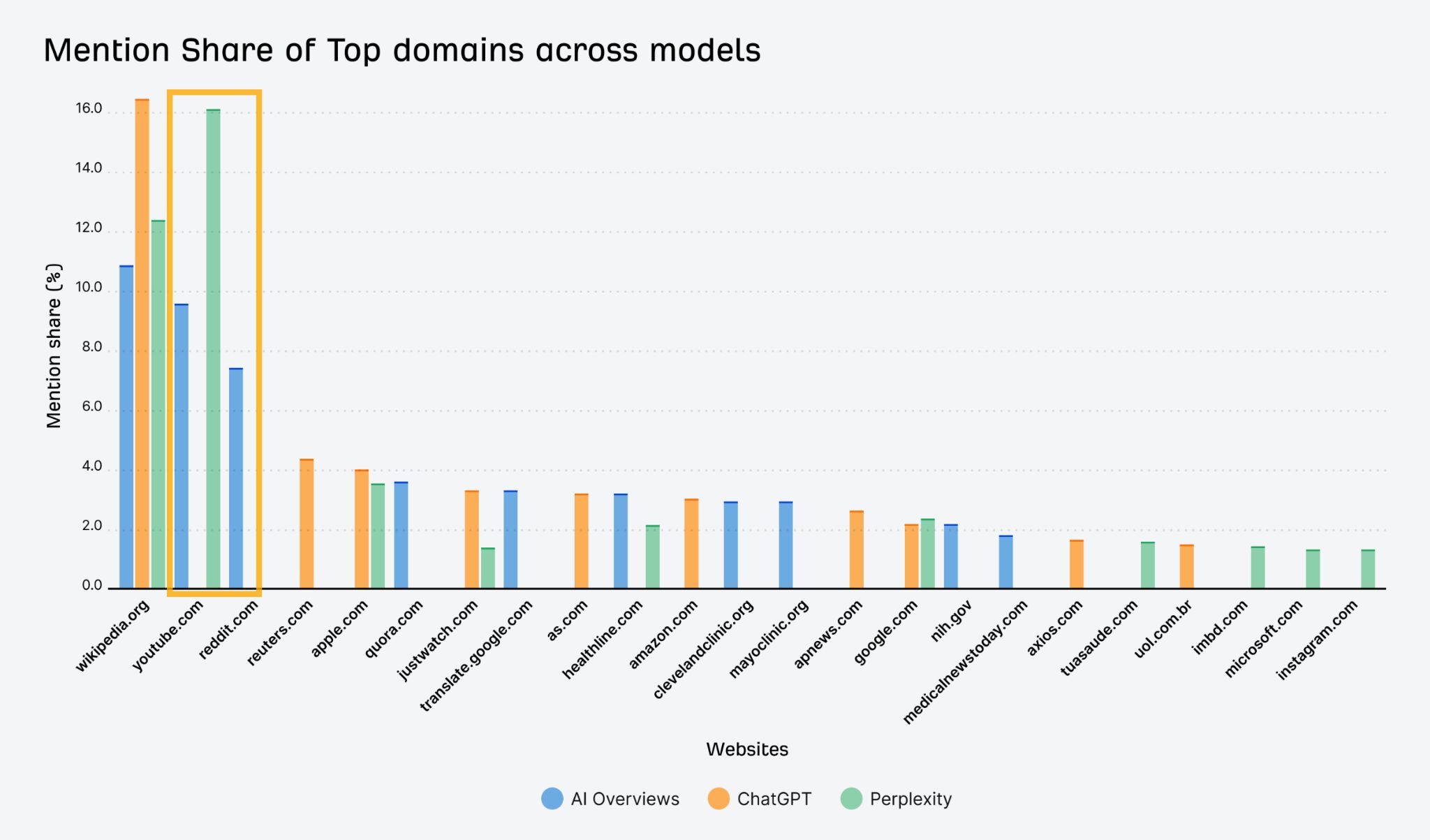
To start optimizing for Reddit, focus on threads that already have visibility in Google Search.
- Go to Ahrefs’ Site Explorer, enter “reddit.com”, and open the Organic keywords report.
- Use filters: positions 1-10, keyword includes (enter phrases related to your site). You can select a preferred location, too.
- Look for relevant keywords with a lot of traffic.
- Add thoughtful, useful answers to these high-traffic threads.
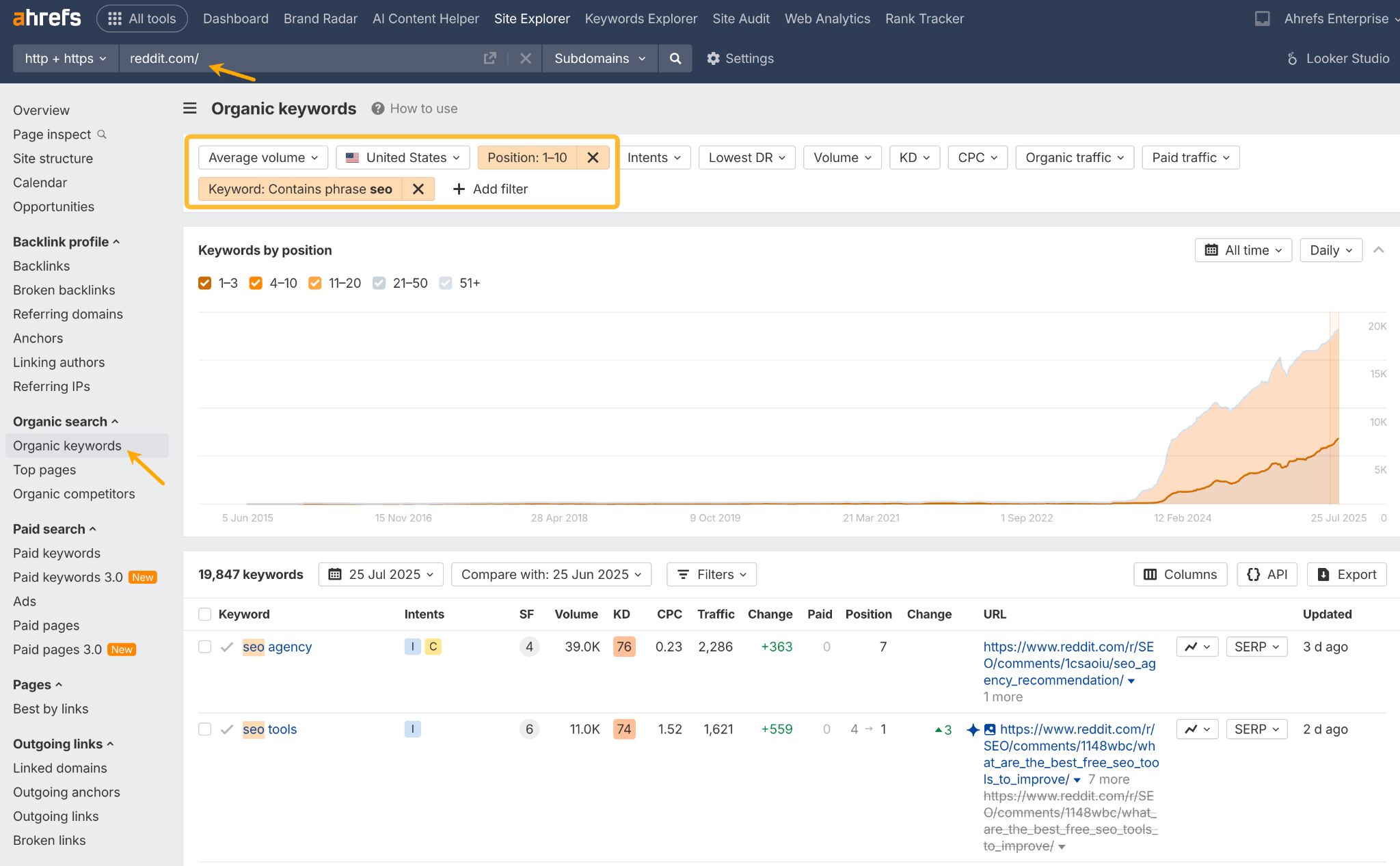
As for optimizing for YouTube, we’ve put together a complete guide that walks you through our video SEO strategy—the same one that helped us earn over 5.7 million organic views and 642,000 watch hours in 2024 alone.
Further reading
5. Find your AI mention and citation gaps
One of the fastest ways to improve your GEO strategy is to see where competitors are succeeding in AI responses while you’re missing out.
I’ll show you how to do that with Ahrefs’ Brand Radar. It’s one of the fastest-growing tools in AI brand visibility, with 100M+ prompts, 5 AI indexes, and requires zero setup.
Finding your AI mention gap (competitors mentioned, but not you)
To find pages that mention your competitors but not you (your AI mention gap), add your competitors to Brand Radar, hover on any AI chart, and click on “Others only”.
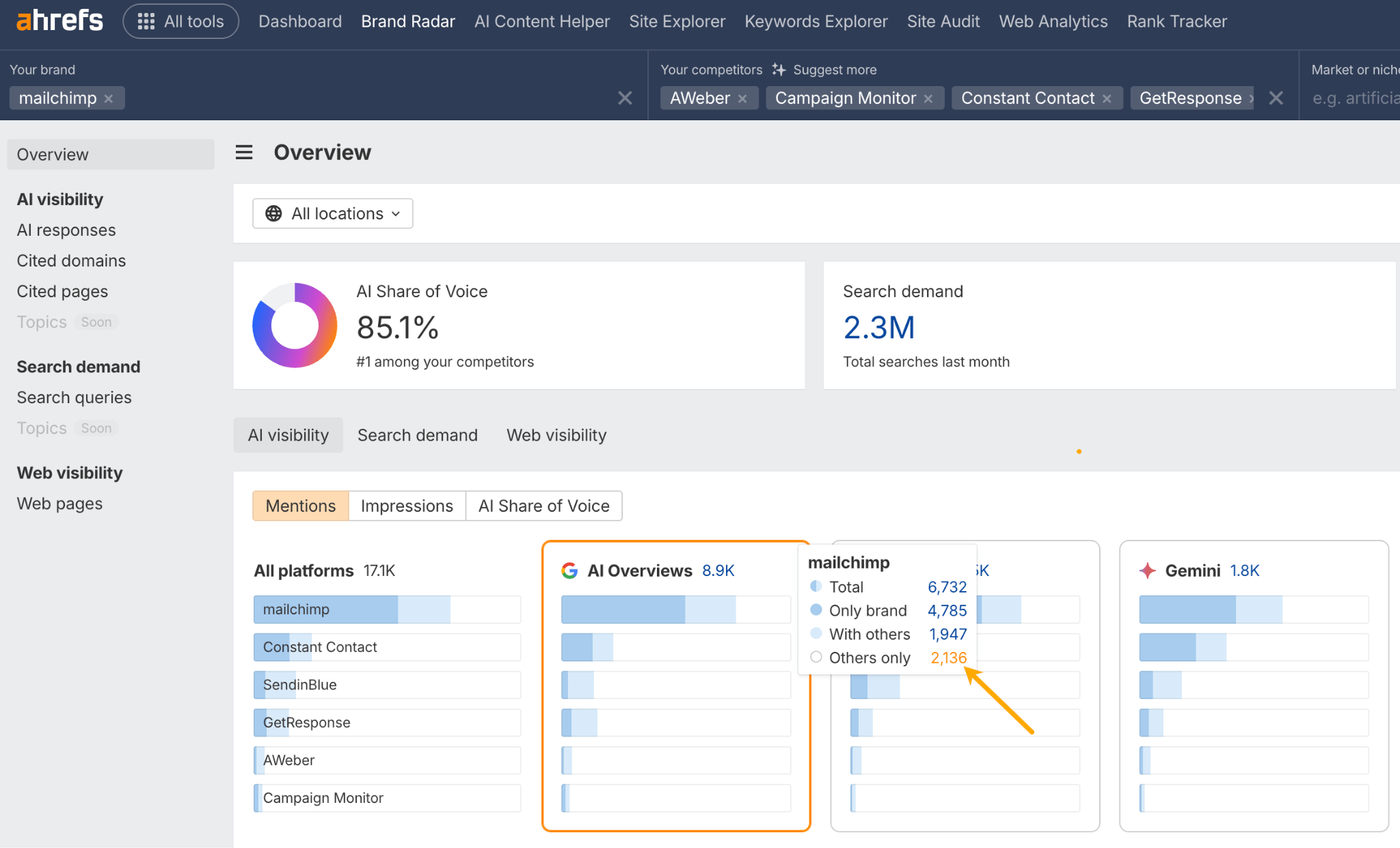
Next, click on the Cited pages report to see websites you could reach out to to close your AI mention gap.
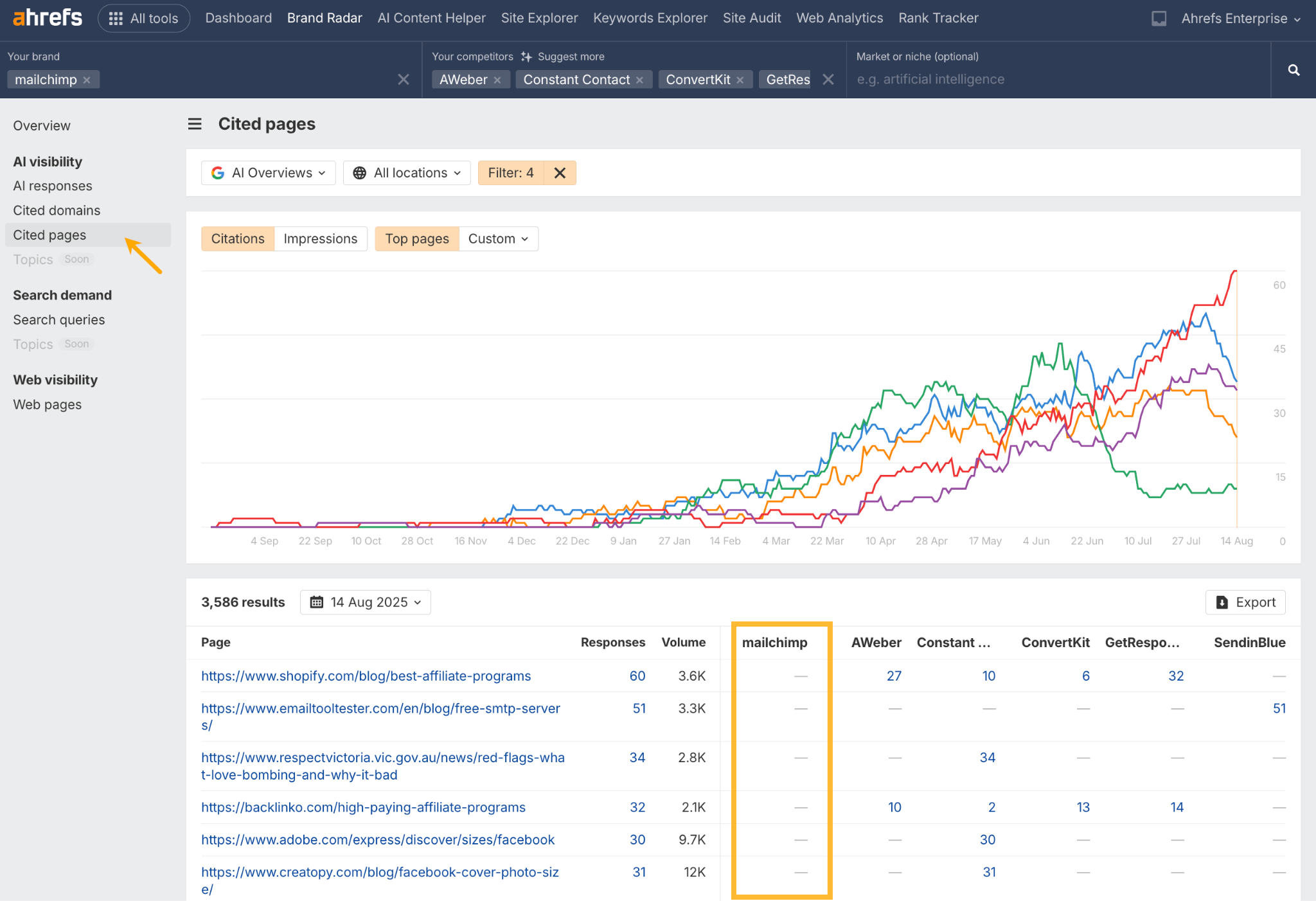
Finding your AI citation gap (competitors cited in AI answers, but not you)
- Start by clearing all the top-level filters in Brand Radar.
- Go to the Cited pages report.
- Apply the competitor filter at the bottom like I’ve shown in the screenshot:
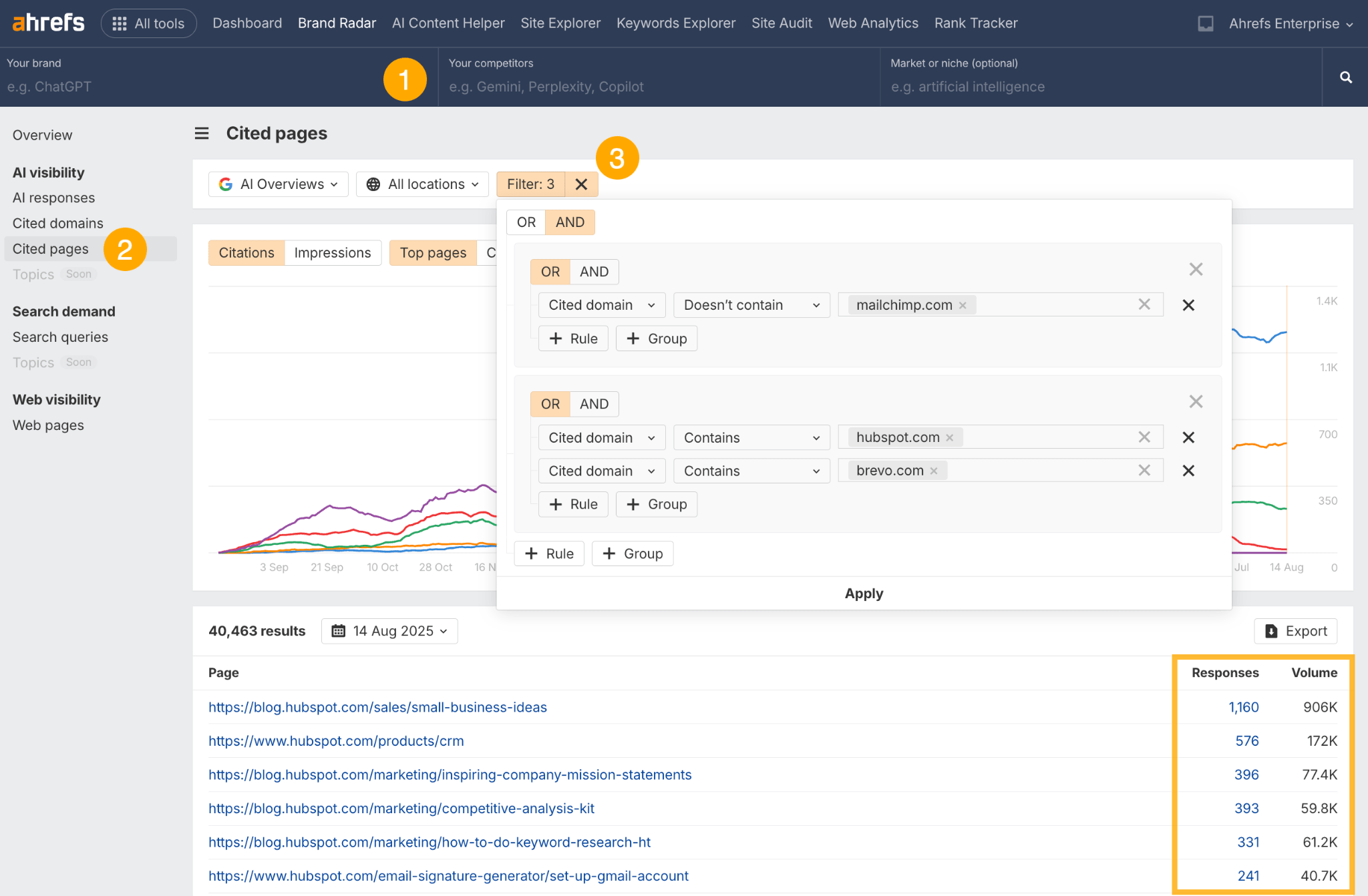
This gives you a list of pages showing how many AI responses mentioned your competitors and the total search volume of those queries. Now you know exactly which content topics and pages to target with your own superior content.
Google’s probably going to push AI Mode everywhere
Right now, AI Mode is mostly available in the US and UK, but Google usually doesn’t keep major features limited to just a few countries. It could eventually become the default way people search, just like Google’s CEO hinted.
But maybe it won’t be as disruptive as it sounds. I’ve already seen a couple of our articles show up in AI Mode without any AI Mode SEO, which backs up what Gary Illyes said: good old-fashioned SEO might still be all you need.
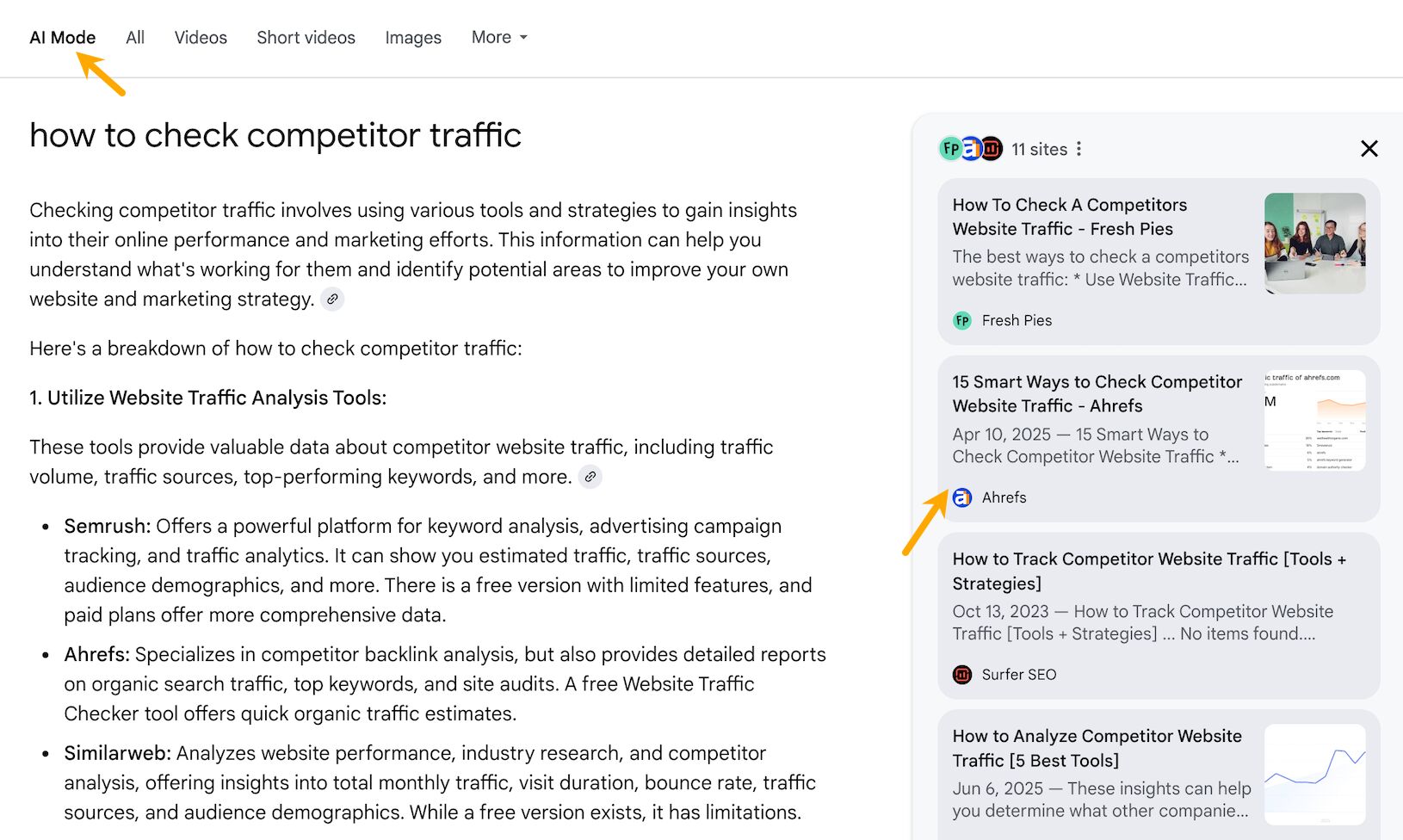
AI is going to start doing things, not just answering questions
The next wave is about AI actually completing tasks for people. Think agents that can compare products, negotiate prices, or even buy things for you. If that becomes the norm, being visible to AI could mean a lot more than just showing up in search results.
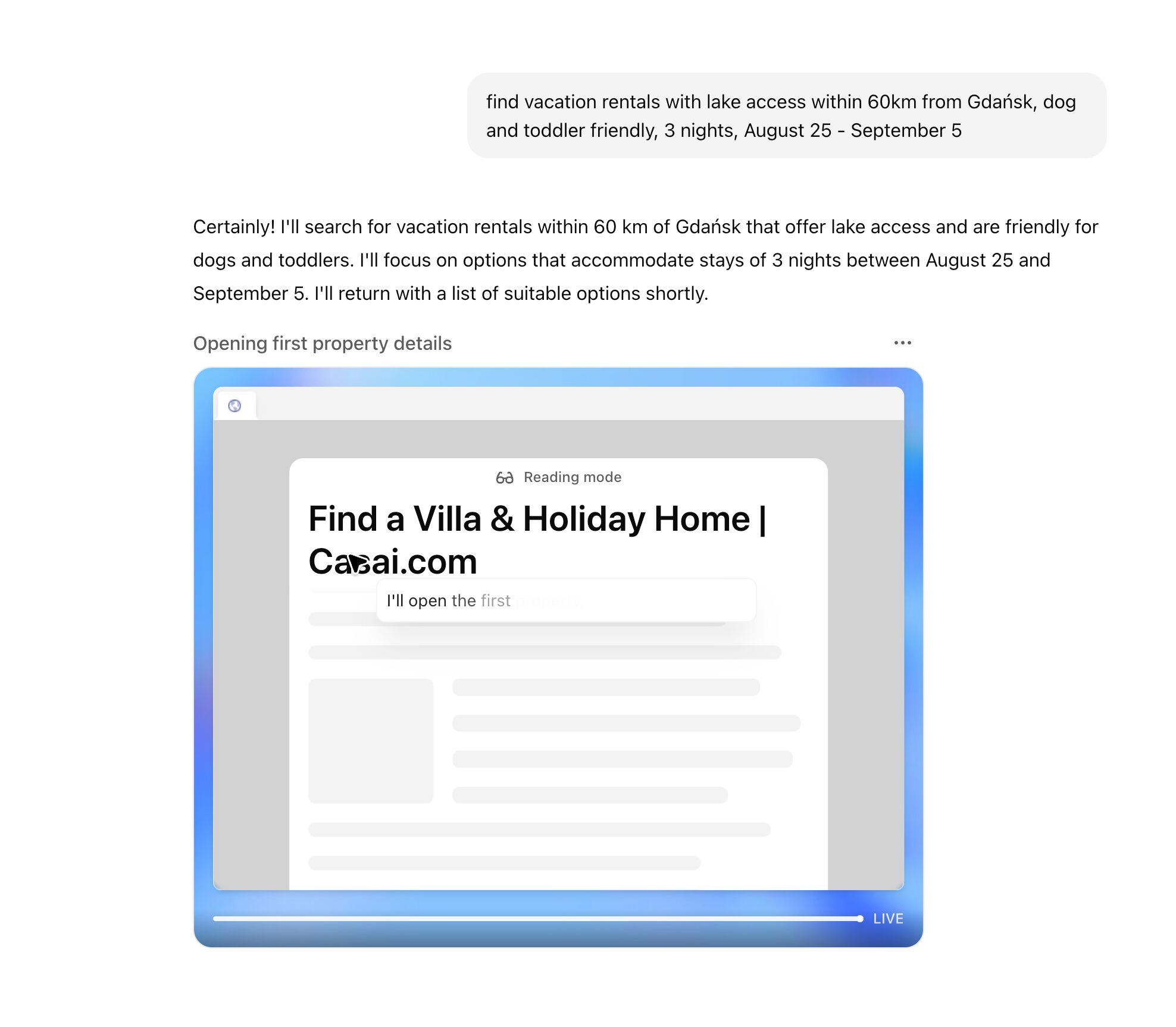
Spam detection will get smarter (but how forgiving will it be?)
Just like Google got better at spotting spam and link schemes, AI systems will definitely get better at identifying attempts to game their responses. The big question mark is how long AI systems might “remember” if you’ve tried to manipulate them. Will they be forgiving like Google eventually became, or will they hold grudges longer?
Final thoughts
Treat GEO as an extension of your existing SEO strategy. After all, it’s basically SEO for AI search. The fundamentals—great content, clear structure, topical authority—work for both. You’re just expanding your definition of success beyond clicks to include AI citations and brand mentions.
AI is moving so fast that even the people building it can’t always keep up. Following blogs like ours is one way to stay in the loop.
Got questions or comments? Let me know on LinkedIn.
Similar Posts
![BEST Seed Phrase Storage [Keystone Tablet Plus]](https://vmcloud.com.au/wp-content/uploads/2025/04/best-seed-phrase-storage-keystone-tablet-plus.jpg)
BEST Seed Phrase Storage [Keystone Tablet Plus]
Get the Keystone Tablet Plus (12% OFF Code: CYBERSCRILLA) https://keyst.one/shop/products/keystone-tablet-plus?rfsn=7218274.a5ef70&utm_source=refersion&utm_medium=affiliate&utm_campaign=7218274.a5ef70 ▬▬▬▬▬Disclaimer: The information provided is for…
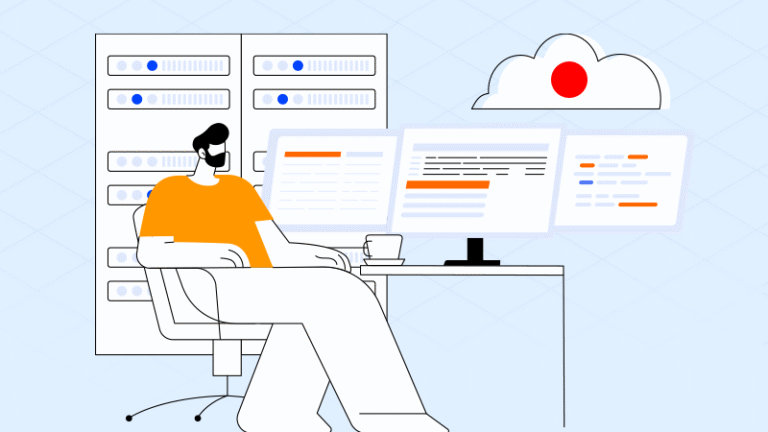
Selecting the Best Japan Server for International Enterprises
Global enterprises face mounting pressure to deliver seamless digital experiences, maintain data compliance, and ensure uninterrupted…
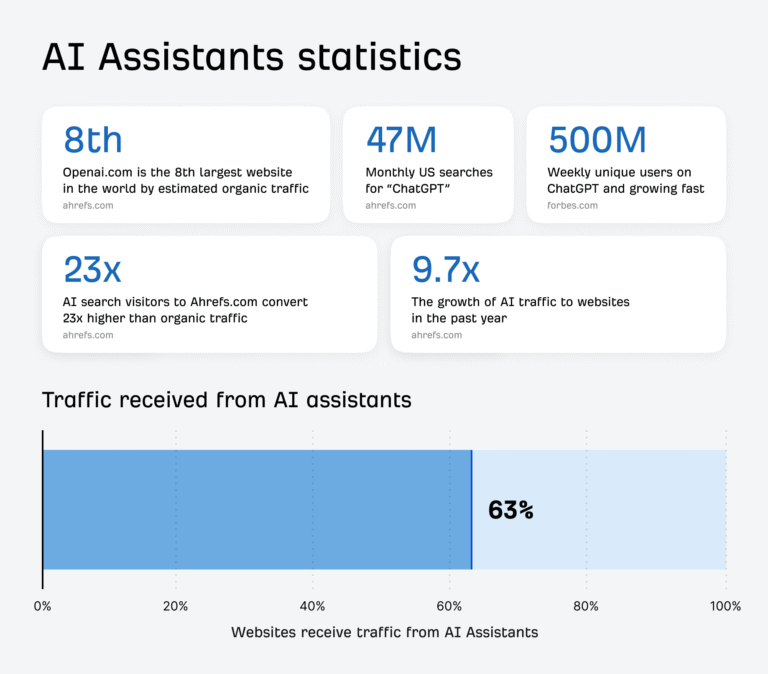
Search Everywhere Optimization: 5 Places to Optimize Beyond Google
Search everywhere optimization (some call it SEvO) means making sure people can find you no matter…

Batch insert and replace images in WordPress posts
In addition to the ability to embed images and YouTube videos into WordPress posts via shortcodes,…
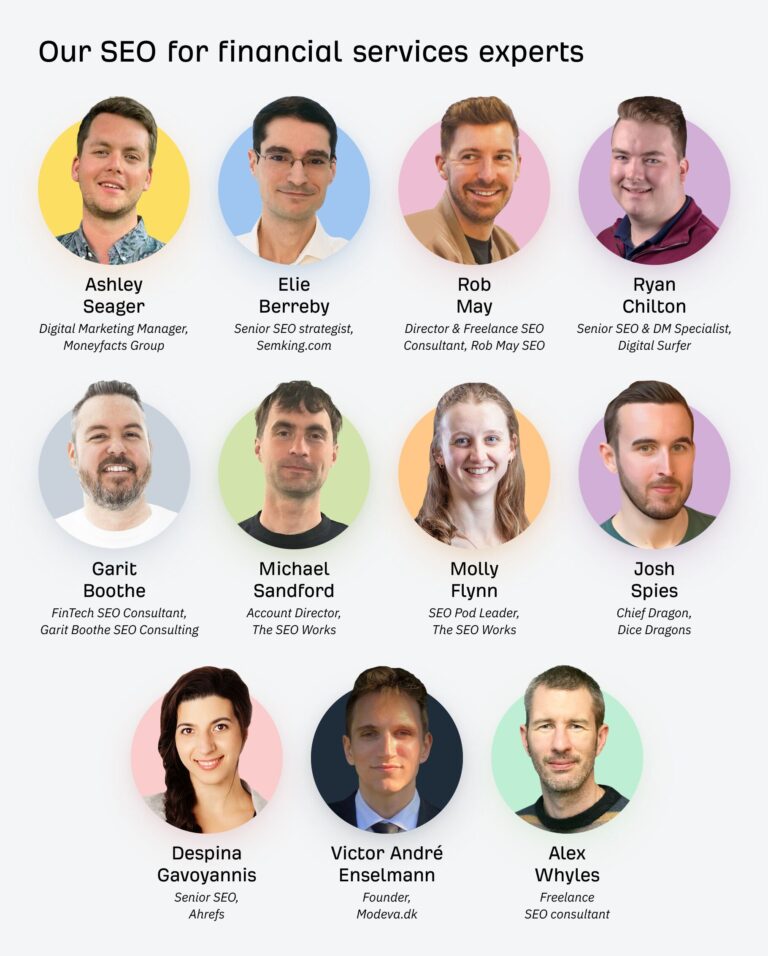
SEO for Financial Services: How to Build Trust and Rank Higher in 2025
This guide is designed to help financial institutions of all sizes navigate the unique challenges of…

US vs Hong Kong Servers: Choosing the Best for Your Needs
When it comes to selecting a server for your business or personal needs, the choice between…